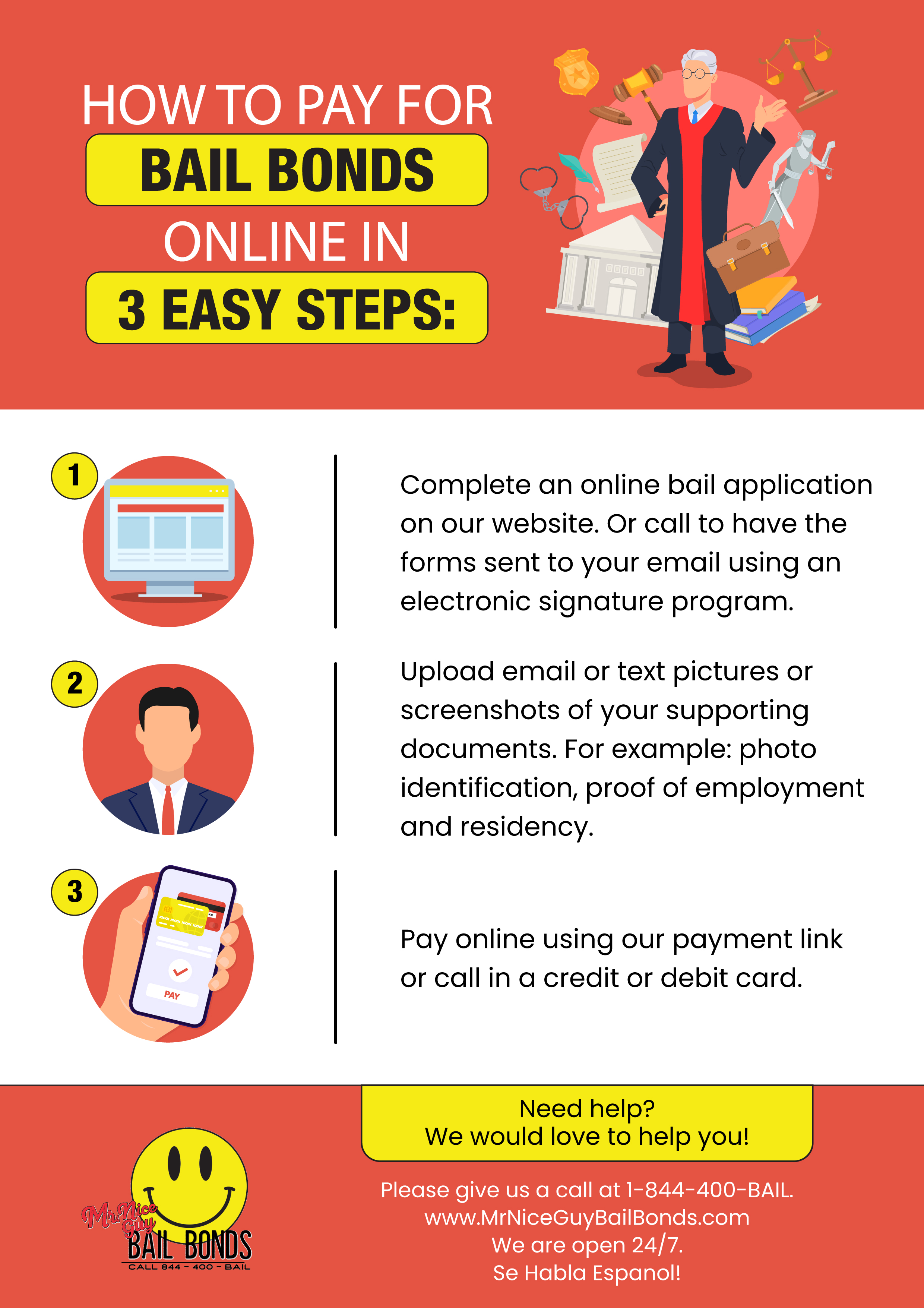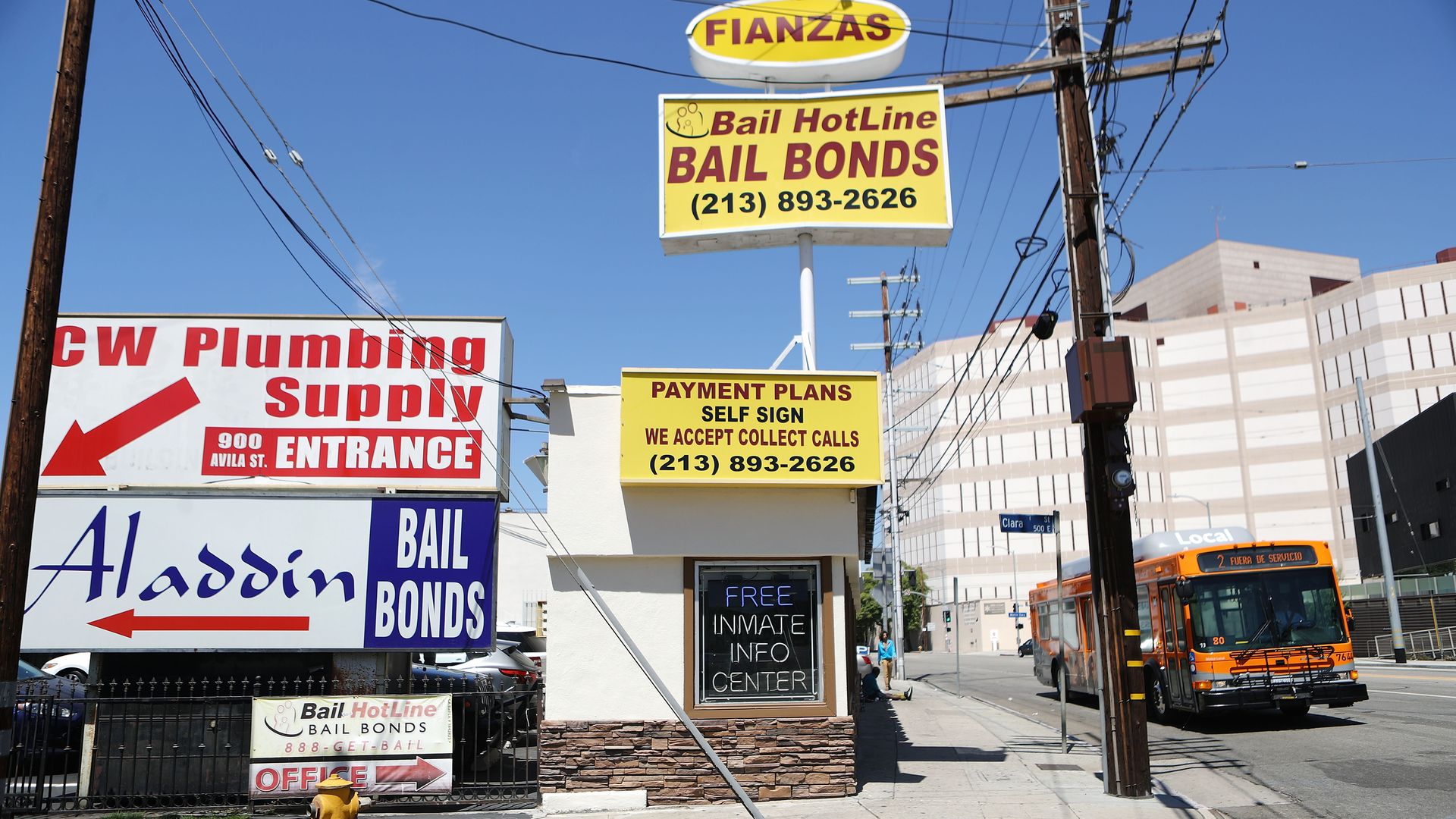Streamlining the Bail Refine: Your Overview to Bail Bonds
Browsing the bond process can commonly feel frustrating, particularly for those strange with the different kinds of bond bonds and the steps involved in safeguarding release. As soon as jailed, the subsequent bond hearing will identify the monetary responsibilities necessary for release.
Recognizing Bail Fundamentals
While the lawful system can usually show up difficult, understanding the fundamentals of bail is necessary for browsing the intricacies of pretrial release. Bail offers as a monetary assurance that a defendant will certainly appear in court for their set up hearings. When an individual is jailed, a court determines the bail amount based on several factors, consisting of the nature of the criminal activity, the accused's criminal background, and the danger of flight.
Bond can take various kinds, consisting of cash bond, where the accused pays the sum total upfront, or surety bonds, where a bondsman ensures the bail for a fee. If the offender falls short to appear in court, they surrender the bail amount, which can cause additional lawful consequences.
In many cases, individuals might be launched on their very own recognizance, suggesting they do not need to pay bail yet has to assure to return for their court dates. Understanding these fundamental concepts is important for accuseds and their families as they navigate the bail procedure, making certain educated decisions are made during a challenging time.
Just How Bond Bonds Work
Recognizing how bail bonds work is essential for any person associated with the bail process. A bail bond is a legitimately binding contract between a bond bondsman, the offender, and the court. When a defendant is detained, a court sets a bail quantity intended to make sure the individual's appearance at future court hearings. If the defendant can not pay for to pay the full bond quantity, they can seek the solutions of a bondsman.
The bail bondsman commonly bills a non-refundable fee, usually around 10-15% of the overall bail amount. This fee represents the bail bondsman's compensation for presuming the economic risk connected with the bond. Once the fee is paid, the bondsman messages the complete bail quantity to the court, securing the offender's release from custody.
For this solution, the bail bondsman may call for security, such as residential property or possessions, to mitigate prospective losses if the defendant falls short to show up in court. If the accused does not attend the scheduled hearings, the bail bondsman deserves to recover the bond amount via lawful methods, which might include working with a bounty seeker. Comprehending this procedure can help people navigate the intricacies of securing a bail bond successfully.
Kinds Of Bond Bonds
After securing a bail bond, it is necessary to identify that not all bail bonds coincide; they can be found in various types created to match different circumstances and demands. The most usual type is the surety bond, which involves a bond bondsman that guarantees the complete bond amount to the court in exchange for a fee, normally around 10% of the total bond. This is excellent for those that can not manage to pay the full bail amount upfront.
An additional type is the money bond, where the accused or their representative pays the complete bond amount in cash straight to the court. This option is frequently made use of when individuals have the financial methods and favor to recover their funds upon court appearance.
Residential or commercial property bonds allow people to make use of property as collateral for bond. bail bond company newark ohio. This requires a residential property evaluation and can be complicated, yet it is helpful for those who have important assets
Last but not least, some jurisdictions supply personal recognizance bonds, where the offender is launched based upon a guarantee to show up in court with no economic obligation. Recognizing these kinds of bail bonds is critical for making educated decisions in your circumstance.
The Bond Process Actions
Navigating the bail process entails several vital steps that can significantly impact the outcome of an accused's scenario. The procedure typically starts with the arrest, during more info here which the person is collared. As soon as apprehended, the defendant will certainly be educated of the charges and might have a bail hearing scheduled, where a judge will certainly identify the bail amount based on the seriousness of the criminal offense, trip danger, and criminal history.
After the bond quantity is established, the accused or their rep can call a bail bondsman. The bail bondsman will analyze the situation, explaining the regards to the bond and the charges entailed, which typically amount to a portion of the complete bond. If a contract is reached, the bond bondsman will upload the bail with the court, allowing the defendant to be released from guardianship.

Tips for Picking a Bail Agent
Choosing a bail agent is an essential action that can substantially influence the bail procedure. It is important to pick a representative that not just understands the lawful complexities yet likewise offers trusted assistance during this stressful time. Begin by looking into licensed bond agents in your area; ensure they possess the required credentials and experience in handling your specific circumstance.
A reliable bail representative should exhibit empathy, transparency, and expertise. Do not think twice to ask concerns concerning their charges, procedures, and any kind of possible collateral requirements.
In addition, consider the schedule and responsiveness you could try these out of the bail representative. An excellent agent needs to be available 24/7, prepared to provide help whenever essential. Assess their communication design; a representative who pays attention and describes plainly can make the procedure a lot more workable.

Final Thought
In conclusion, browsing the bail procedure needs a clear understanding of the various kinds of bond bonds and the procedural steps included. Involving with a qualified bail bondsman is critical for facilitating launch while guaranteeing compliance with court responsibilities.
Navigating the bond process can typically feel frustrating, particularly for those strange with the numerous kinds of bond bonds and the steps involved in securing launch.Recognizing how bail bonds work is crucial for anybody involved in the bail process. A bail bond is a legally binding arrangement between a bail bondsman, the defendant, and the court.After safeguarding a bail bond, it is crucial to acknowledge that not all bail bonds are the exact same; they come in numerous types designed to match various circumstances and needs. The most typical kind is the guaranty bond, which involves a bail bondsman who assures the full bail amount to the court in exchange for a cost, generally around 10% of the total bail.
 Katie Holmes Then & Now!
Katie Holmes Then & Now! Samantha Fox Then & Now!
Samantha Fox Then & Now! Barbara Eden Then & Now!
Barbara Eden Then & Now! Terry Farrell Then & Now!
Terry Farrell Then & Now! Mike Smith Then & Now!
Mike Smith Then & Now!